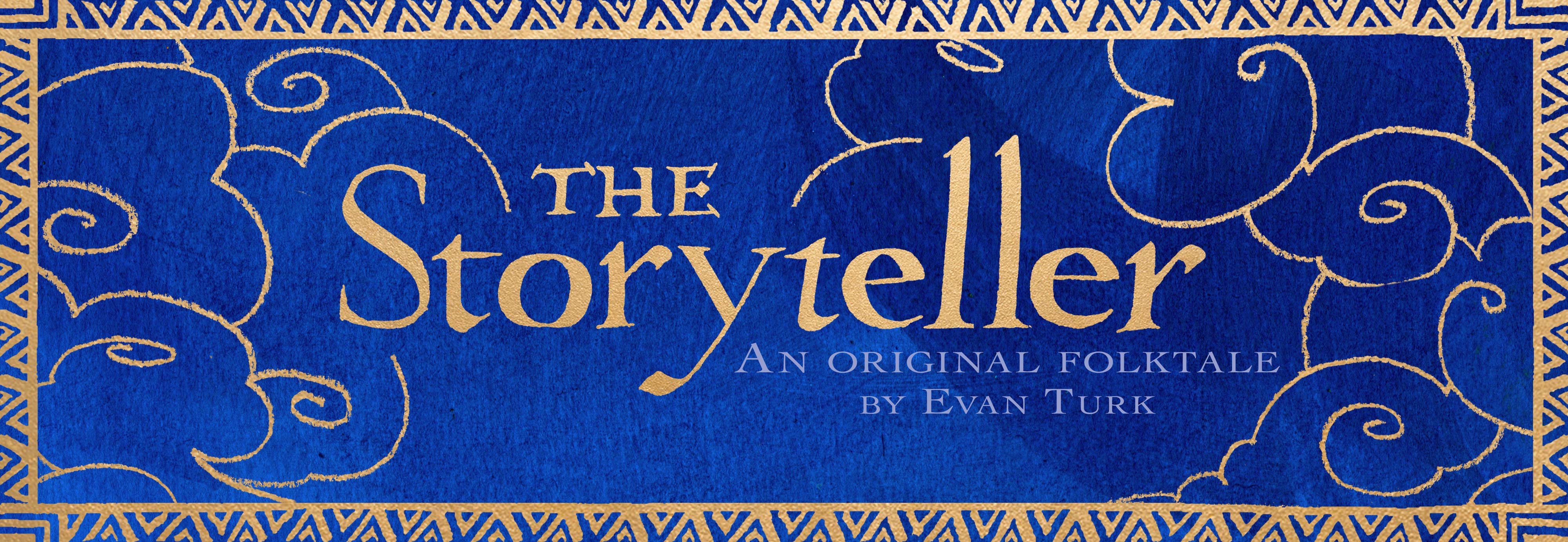All the Wonders Shares Resources for The Storyteller
Our heartfelt thanks to All the Wonders for all the tremendous resources they put together for sharing and teaching The Storyteller. Explore them here.
Read MoreAudio Glossary for The Storyteller & Teaching Materials
Our thanks to former Moroccan educator Abdelaziz Rhazzali for explaining the Moroccan Arabic words in the picture book and the companion teaching materials! Shukran!
Read MoreThe Art of ‘The Storyteller’: Behind the Scenes, Part 2
So, you would like to hear the story of how
THE STORYTELLER became a book?
Ah yes, well, not so long ago…
After I figured out the story I wanted to tell, I created a pagination of small thumbnails to decide how I wanted to tell that story in pictures.
This helps figure out what images and symbols are important and how to emphasize them throughout the story. Even in the early thumbnails, you can see that the water/bird/yarn/stories were all blue and stood out against the rest of the palette.
Along with the pagination, I did many small thumbnail sketches to figure out how the final art and characters might look.
Read MoreThe People of Morocco in ‘The Storyteller’
Morocco is a country with a long history, and traditions, like storytelling and carpet weaving, that extend back a thousand years. But it is also a modern country in today’s world. As in most countries, the traditional and the new exist simultaneously.
The central story in The Storyteller, ‘The Sandstorm and The Storyteller’, about a boy inheriting and using the wisdom of a master storyteller, takes place in modern times. The reader is introduced to the boy in the “Great Square” based loosely on the Jamaa EL Fna square in the old medina of Marrakech in the illustration above. In this one illustration, readers can notice many different aspects of the modern mixing with the traditional.
Read MoreThe Last Storytellers of Marrakech – By Richard Hamilton
I found him sitting on a mattress in a dark room praying.
It had taken days to track him down in the narrow crumbling streets of Marrakech’s medina. Ahmed Temiicha was once the most famous storyteller in Marrakech, but when I met him he was old, frail and had gone blind.
He lived in an old house or riad with balconies overlooking an inner courtyard of peeling walls and cracked tiles. I sat down and listened to his stories. His eyes seemed to sparkle as he recounted a long twisting saga called, “The Apples of El-Ghaliya bent Mansour.” She was an enchantress who lived beneath the seventh sea. She would sleep for a year and stay awake for the next one. She would make her bed with half of her hair and cover herself in the other half. Seven watchmen guarded seven doors of her underwater palace. Beyond its walls was an orchard of golden apples. The hero of the story had to steal one of these in order to marry a beautiful princess…
Like tales from ‘A Thousand and One Nights’, traditional Moroccan stories are fantasies; a world where listeners young and old can escape from their everyday lives. But they are also fables, parables and morality tales which teach us how to live a good life. The stories of Marrakech are especially culturally rich because they have diverse influences: from the Arab Middle East, Sub-Saharan Africa and the Berber people of North Africa.
As I listened to Ahmed’s stories, I felt as if I was travelling back in time. This must have been what it was like centuries ago in remote mountain villages or among the dunes of the desert, when camel herders gathered around camp fires and told tall tales beneath the stars. It had been a privilege to listen to Ahmed in that small room with its broken tiles and old mattresses. By telling stories he seemed to keep himself alive, and he enchanted me. In the land of the blind, the storyteller is king.
Read MoreA letter from Moroccan Storyteller, Mehdi EL Ghaly
As-Salaam-Alaikum!
(Peace be unto you)
I want to share with you a story about a kid who grew up to be one of his idols.
Not long ago, there was a child, a baby boy, who grew up in a traditional Moroccan house in the old medina of Marrakech. He was so energetic that where ever he went he caused a mess. One night his grandmother told him “I want to tell you a story.” She began with the words “Hajitek Majitek,” which mean “Once upon a time” in Moroccan Arabic. The boy started listening, but eventually he fell asleep in the middle of the story. When he woke up the next day, he asked his grandmother for the rest of the story, but she replied that she would continue the story that evening. From that moment on, every evening, with her stories, his grandmother changed and built something within the boy that he would soon discover.
Read More











